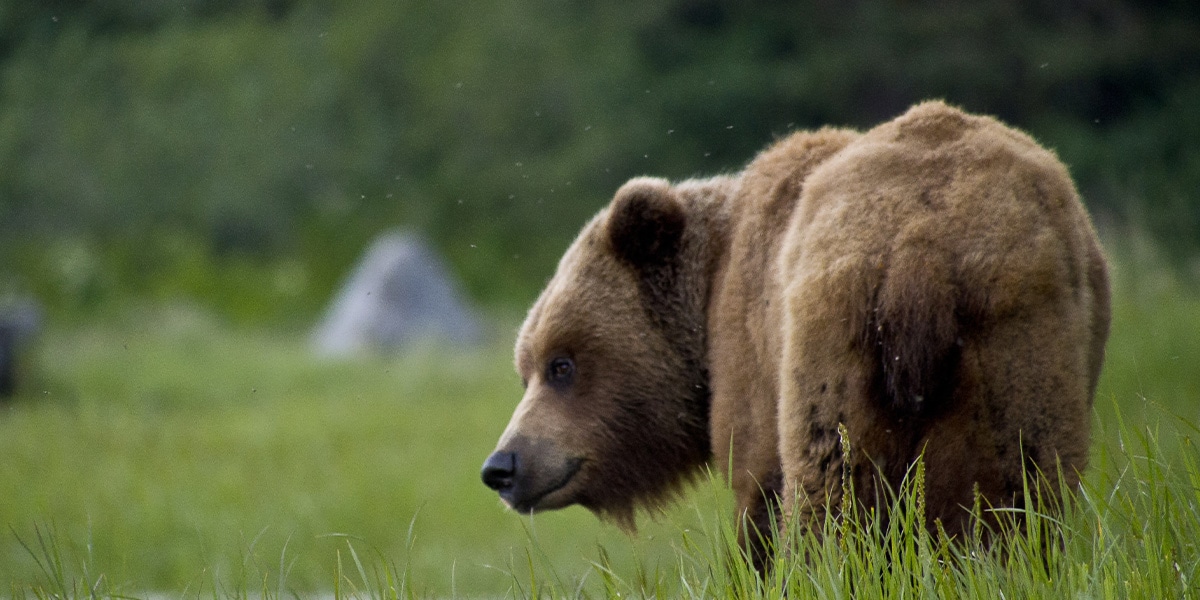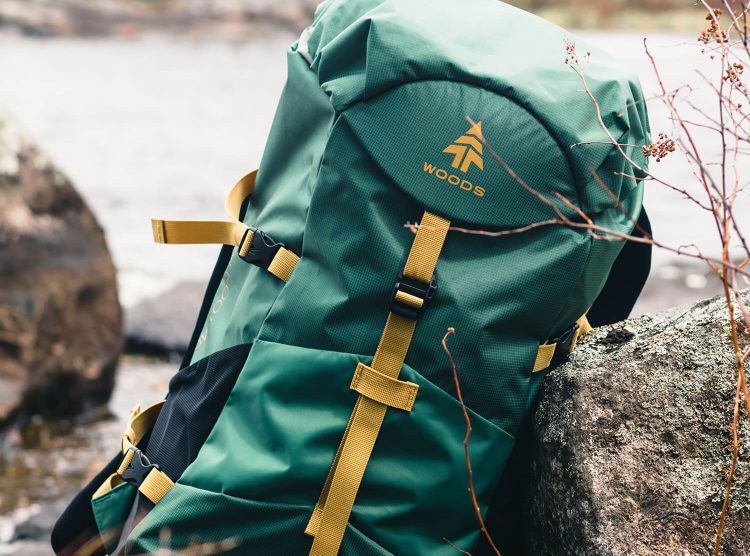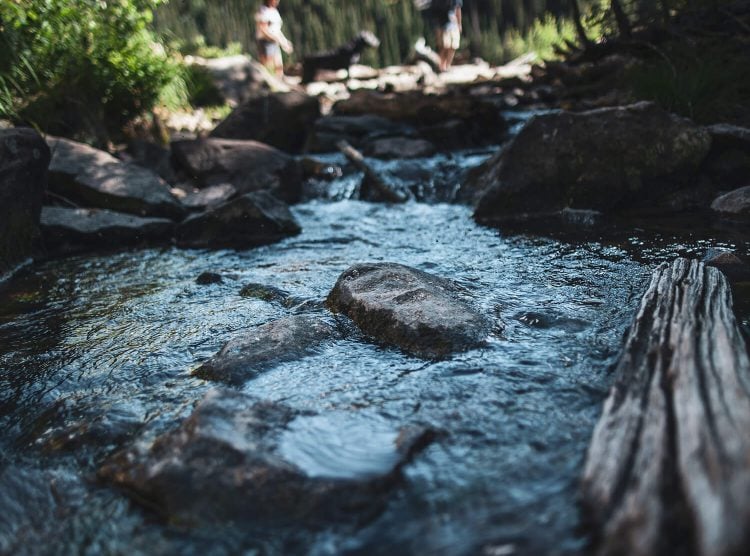Stay Safe and Make Travel through Bear Country More Bearable
The protected parks and wilderness areas within the Rocky Mountains of Wyoming, Washington, Idaho, and Montana are estimated to be the home of at around 2,000 grizzly bears7. The black bear population in just the state of Colorado is estimated to be over 17,000 6. Being a ‘good neighbor’ in bear country protects humans and bears alike. Please follow guidelines for traveling among this wonderful mega-fauna, and help keep the CDT landscape safer for travelers and while protecting wildlife from the consequences of interacting with humans- and their food.
Where is bear country?
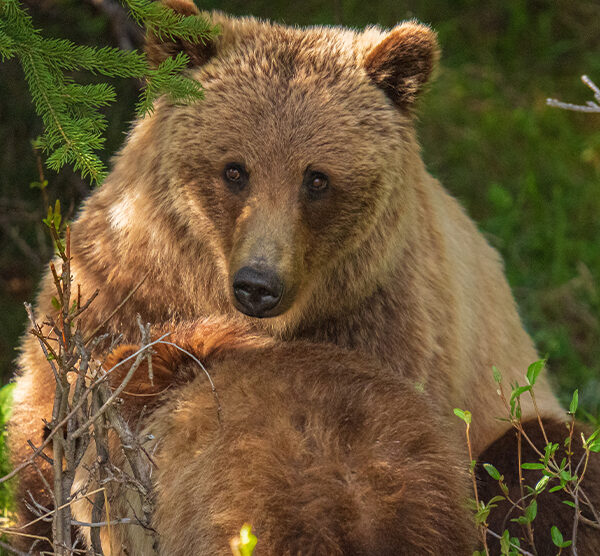
Food storage
Be sure you’ve got the bear necessities when traveling in bear country for keeping your food safe and out of wild paws.
More info
Pledge to Protect
Every donation helps:
Keep the CDT Wild through education and information
Provide trip planning resources
Honor the natural, cultural, and spiritual histories that have shaped the CDT landscape
Build community on and off the trail

Bear Facts & Resources
Find out more about bears, including how to tell them apart and why they are an important part of the Continental Divide ecosystem.
More infoFood/Attractant Storage and Bears
When people make it easy for bears to get into food and garbage, the lure of an easy meal can overcome a bear’s natural wariness of humans. Once bears learn to follow their super-sensitive noses to campsites and picnic grounds, they can damage property and even break into cars and campers.
A bear intent on getting a meal can easily injure someone who gets in its way.
Bears learn quickly and will return to areas where they find food. Not only can this be dangerous for people, but it is also harmful to bears.
Options to Store Food Properly & Keep it Safe from Bears
- Travel with a portable, hard-sided, bear-resistant container. Hear from a CDT hiker who completed the entire CDT with a bear canister!
- Hang food and attractants in a bear-safe manner. Steps to securely hang food
- Kevlar food sacks. BE ADVISED: Some locations require hard-sided containers. Know before you go.
Food Storage Requirements
What Is Considered “Food”?
Bears have an insatiable appetite and an amazing sense of smell, and they consider anything with a scent to be “food.” This can include any “smellies”, from canned goods, bottles, drinks, soaps, cosmetics, toiletries, trash, ice chests, sunscreen, bug repellant, fuel, to items used for preparing or eating meals, etc. All of these items must be stored properly. Always check with the area you plan to visit to learn the regulations. Not following those rules may result in fines, confiscation of food, towing of cars, or other penalties to protect visitors, property, and bears. Read below to learn some common food storage tips that can help you have a safe and enjoyable experience.
- Check local regulations before taking food into the backcountry.
- Try choosing foods that are compact, compressible, high-calorie, and lacking in strong odors, such as rice, tortillas, jerky, pasta, nuts, dried fruits, peanut butter, and protein bars.
- Taking food out of its original package may allow you to fit more food in your canisters. Use resealable bags instead of bottles, jars, and cans.
- Carry an extra plastic bag to contain crumbs and wrappers that can leave odors in your backpack.
- Bear-resistant containers only work if they are closed and locked. Be sure to keep the container closed and locked even while you’re around your campsite.
- Place containers on flat, level ground 100 feet or more from your campsite.
- Do NOT place containers near cliffs or any water source, as a bear may knock the container around or roll it down a hill trying to open it.
- Do NOT attach anything to containers. Ropes attached to containers enable a bear to carry it away.
- Place pots and pans on top of containers as a bear alarm.
- Find tips on how to use and pack your bear-resistant canister, such as what to do when a bear approaches your camp or bear canister.
- Do NOT dispose of or attempt to burn food waste in the wilderness. Pack out all uneaten food and food particles. Treat food wrappers and other garbage the same as food.
- Always keep your food within arm’s reach and don’t turn your back to your food.
- In some areas, food may be stored inside your car as long as it is out of sight, with windows completely closed, and only during daylight hours; never store food in a pickup truck bed or strapped to the outside of a vehicle. In other areas, all food must be removed from your car and stored in lockers.
- Secure your food, garbage, and other scented items immediately upon arriving at your campsite.
- Do NOT store food in your tent or backpack.
- Wash dirty dishes immediately.
- Do NOT attempt to burn excess food, tea bags, or coffee grounds in a fire. Burning organic matter completely requires a very hot fire, hotter than most campfires. The partially burned matter will still draw wildlife into camps.
Keep all food inside your room. If you are not in the room, the windows and doors must be closed. Bears can easily break into cabins through an open door or window.5
Bad for Humans and Bears
In a study by Utah State University in 2018 on Human Bear Conflicts they counted the bears killed in each state yearly as a result of human bear conflict, almost always involving accessing human food. Here are the numbers for the states that the CDT runs through (These numbers include both bears killed in communities in the urban-wildland interface as well as in the backcountry and is not exclusive to overnight backcountry use.)
New Mexico: 120
Colorado: 275
Wyoming: 22
Idaho: 25
Montana: 177
Hiker Safety in Bear Country
Stay safe… without being bearanoid. Staying educated about bears and practicing safety is important for all bear-country travelers and CDT hikers. Follow these tips from agencies, bear biologists, and other hikers to stay safe and bear-aware. When in doubt, practice Leave-No-Trace.
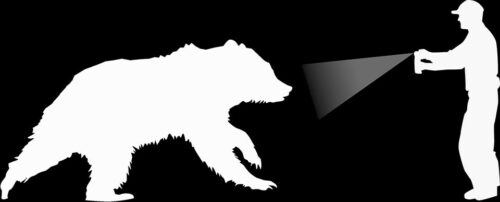
- Hike in groups and make noise. Hiking solo carries greater risks. If you are solo, make plenty of noise to alert bears in the area who may be startled by your presence and view you as a threat. Not surprising a bear is one of the most important preventative actions5.
- Carry bear spray in bear country. Bear spray can be useful for other protection along the trail, so consider carrying it through any bear territory or along the length of the CDT. Did you know that bear spray is considered more effective in stopping a bear attack than a firearm? Read this
- Store food in a bear-safe manner. Options for food storage in bear country.
- Watch for signs of bear activity, including bear scat, tracks, diggings, torn-up logs and turned-over rocks, and partly consumed animal carcasses.
- Don’t hike with headphones, are at least not in both ears. This might not be popular, but it’s precautionary. Hiking with distraction might cause you to miss an important clue to avoid a bear encounter.
- Keep a clean camp and cook at least 50′ from your tent. Some hikers even stop to cook dinner an hour or so before they plan to camp to keep campsite odors down.
- Always keep a safe distance from wildlife. Never intentionally approach or get close to a bear.
- Know your bears. It is important to know the difference between grizzly bears and black bears. Bear ID tips
More about bear safety, and what to do if you see or are approached by a bear.
Where is Bear Country?
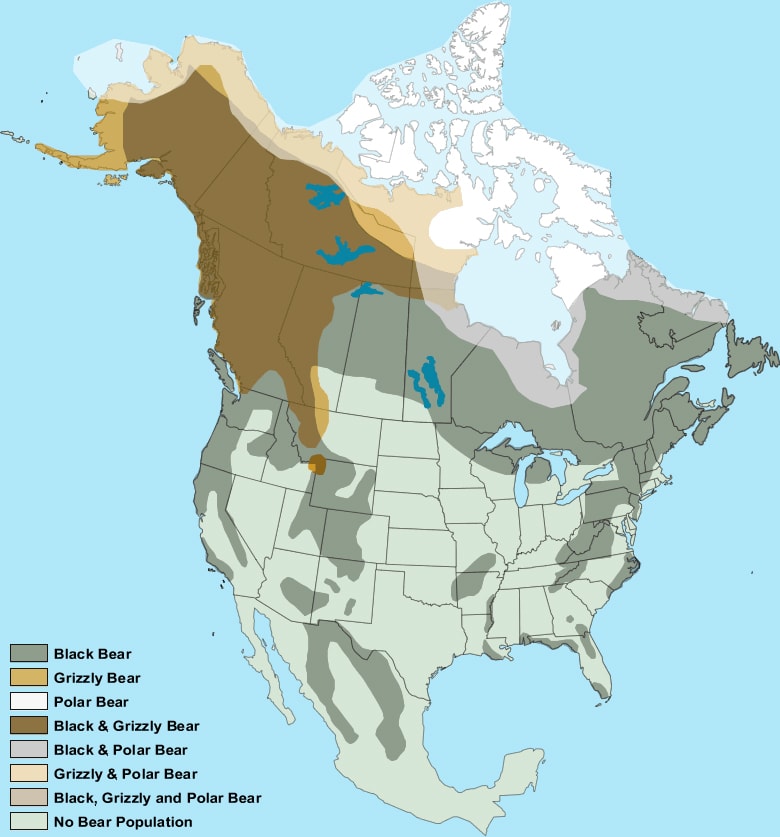
Although people most often imagine grizzly bears when considering bear safety, black bear habitat occurs along MOST OF THE CONTINENTAL DIVIDE NATIONAL SCENIC TRAIL.
Even when traveling in black bear habitat, you are in bear country.
More about the two bear species on the Continental Divide Trail.
Bear Facts & Education Resources
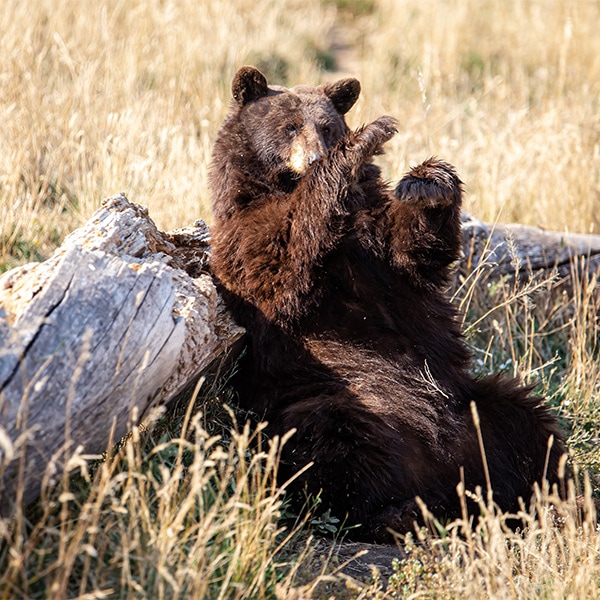
The North American black bear is the most abundant bear in the world. They are highly adaptable animals that are known to live in a wide variety of habitats but typically inhabit forested land. Currently, North American black bears exist in 95% of their former range, and they are even returning to forested areas in or near major cities. Black bears can vary in color, appearing black, brown, reddish, blonde and even occasionally white.
Black bears tend to shy away from humans, except when humans are negligent with food, garbage, and other bear attractants. They can easily become conditioned to eating human food, and may eventually stop foraging in the forest and become a dangerous nuisance to humans. Relocation efforts often fail, because bears will travel long distances over difficult terrain to return to their home range. Food-conditioned bears are often killed by humans.1
Knowing how to tell the difference between a black bear and a grizzly bear is extremely important. What to do in the event of an encounter is based on this knowledge.
Learn how to tell the difference between the two bear species on the CDT before you travel through bear country.
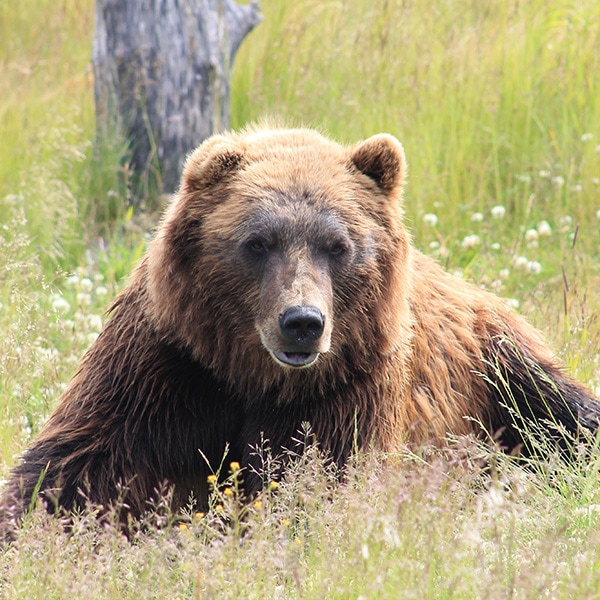
Grizzly bears are native, iconic omnivores that have high value to people and cultures across the state and around the world. The grizzly, coastal, and European brown bear are all the same species. Grizzly bears play important roles in ecosystems. At the same time, they can and do injure or kill people and livestock and cause property damage.
Brown bears are characterized by a wide, massive head, dish-shaped face with long snout, long claws, and a prominent shoulder hump. The hump is a thick wad of fat and muscle for digging roots and corms under the ground, and its appearance is enhanced by longer fur at the top of the shoulders. Brown bears have round, small ears in comparison with the longer-eared black bear.
When bears are human food-conditioned, they get into trouble. When a bear becomes a problem it may be relocated, but it often returns to its home range, or gets into trouble in its new home, resulting in the bear’s death. Grizzlies are an important top carnivore in the ecosystem, and they are animals that can teach us a lot about living responsibly with wildlife and respecting the wilderness and habitat where they make their homes. Because of large and diverse habitat requirements, conserving grizzly bears results in the conservation of many other species that share the same habitat. 1
Resources from the Montana Department of Fish, Wildlife & Parks:
- Learn more about being “Bear Aware”
- For Teachers/Educators: Grizzly Bears of Montana – A Resource Guide for Educators (PDF)2

Make the Pledge to Protect
CDTC is encouraging Continental Divide Trail users to make a pledge to protect wild places and to keep wildlife WILD. Go a step further to protect the landscape, communities, and wildlife of the CDT, and make a pledge today.
learn more1 The Great Bear Foundation, http://greatbear.org/bear-species, 2023.
3 https://cpw.state.co.us/learn/Pages/LivingwithWildlifeCampingBearCountry.aspx
4 https://geology.com/stories/13/bear-areas/
5 National Park Service website)
6 https://coloradoencyclopedia.org/article/black-bear
7 U.S. Fish & Wildlife Service, https://www.fws.gov/species/grizzly-bear-ursus-arctos-horribilis.

